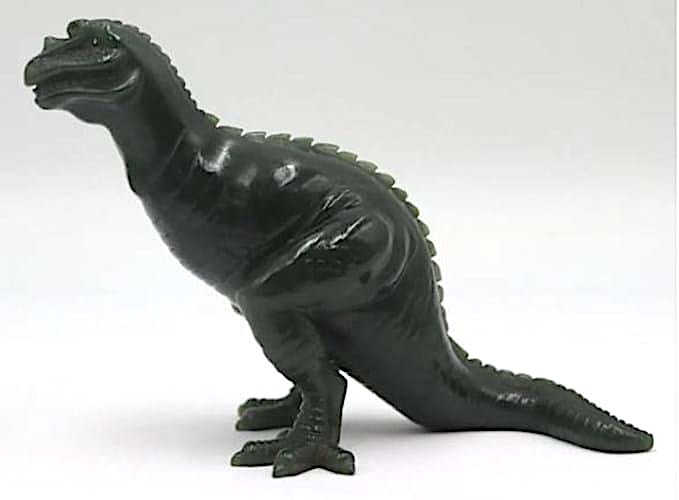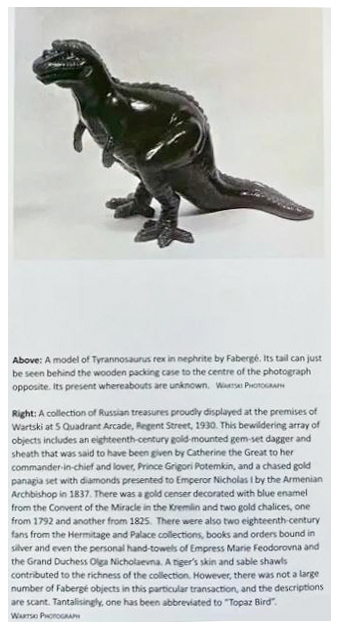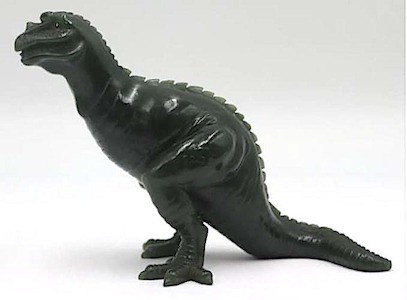
LARCHMONT, N.Y. – A rare Fabergé jade carving of a Tyrannosaurus rex is headed to auction on November 7.
Clarke Auctions in Larchmont, New York, has UK Antiques Roadshow specialist Geoffrey Munn to thank for the discovery after he spotted it, unattributed, in an advertisement in Britain’s Antiques Trade Gazette (ATG).
At almost 6in (15cm) across, the nephrite raptor with diamond eyes is among the larger Fabergé hardstone carvings, but its importance lies in subject matter. Very few Fabergé models of dinosaurs are recorded.
Munn, who spent close to 50 years at London jewelers Wartski, says he knows of just three (the others are a triceratops and a pterodactyl). He immediately recognized this piece (advertised in ATG issue 2516, page 47) as one he had featured in his book Wartski The First 150 Years. He told ATG: “This is a long-lost, extremely rare, and potentially valuable carving. It was sold by the Russian [state] to Wartski in the 1920s or early ’30s, and during my long career I never heard of it again.” He added: “I thought it best to tell the auctioneers in case it was lost to posterity forever.”
This piece, representing a Tyrannosaur as it was understood to look at the time, dates from circa 1910, not long after the discovery of the first Tyrannosaur bones. Fossil hunter Barnum Brown found the first remains in Hell Creek, Montana, in 1902 followed by a near-complete skeleton in 1908.
Dinosaur models would have been extremely topical but — less saccharine than most Fabergé animals — may have been made to sate the interest of a particular client. The link to the sales by the Antikvariat (the department of the Ministry of Trade set up by Lenin to handle the sale and export of art) suggests a strong connection to the Russian imperial family.
The Fabergé T-Rex, that would doubtless be priced well into six figures in perfect condition, has not survived the years unscathed. There is a repair to breaks to a leg and a toe and, most problematic, its “arms” have been broken and “polished out” to disguise the problem.

It comes to auction at Clarke with a revised catalog description on Sunday, November 7, with absentee and Internet live bidding through LiveAuctioneers. The original estimate of just $800-$1,200 has already been passed by absentee bids.
The US has been the source of several important Fabergé rediscoveries in recent years. The forthcoming exhibition at the Victoria & Albert Museum titled Fabergé in London: Romance to Revolution (opening in late November) includes two such pieces. These are the Third Imperial Egg uncovered in the Midwest in 2012 and bought by Wartski on behalf of a collector; and a carved hardstone figure of an Imperial bodyguard bought by Wartski for $5.2 million at Stair Galleries in 2013.
______________________________________
By Roland Arkell, Antiques Trade Gazette


